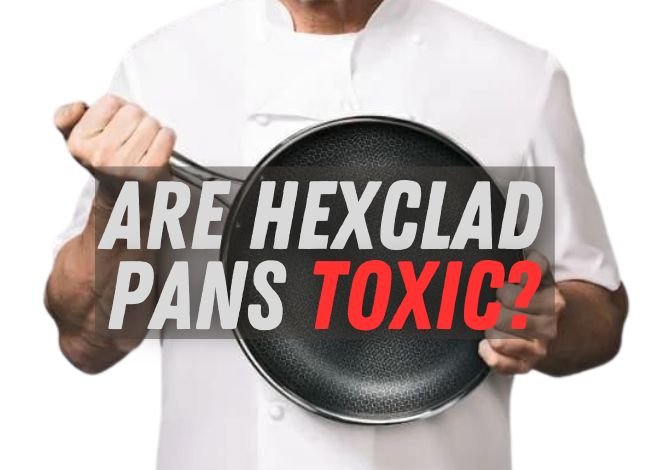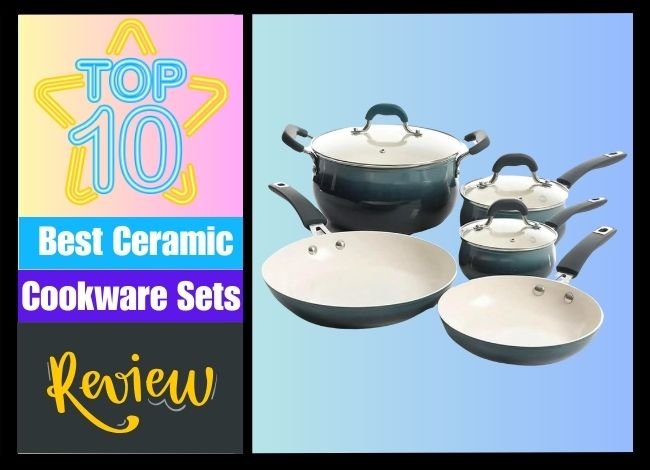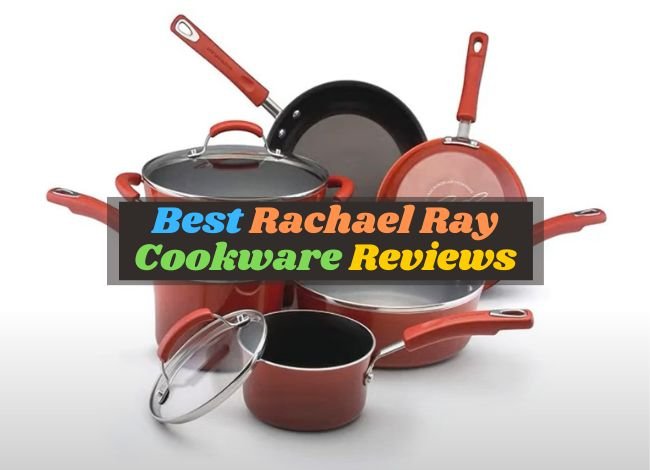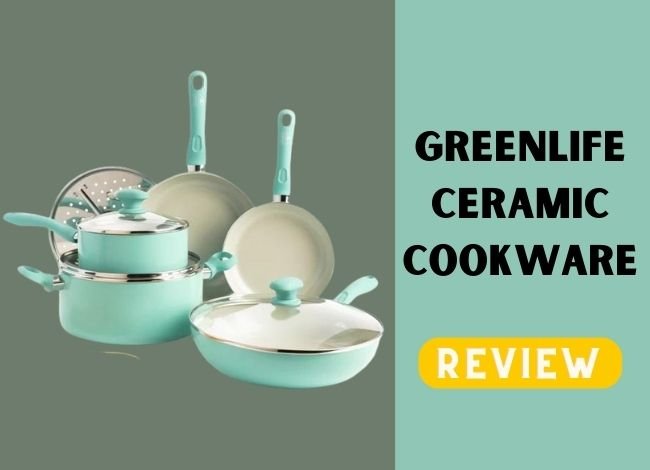Last Updated on January 30, 2024
HexClad pans have gained significant attention in the culinary world, especially among those seeking a blend of non-stick convenience and durability. These pans, known for their unique hexagonal design, promise a cooking experience combining the best stainless steel and non-stick technology. This comprehensive article delves into various aspects of HexClad pans, addressing common concerns about safety, value, and health implications. Our goal is to provide you with a well-rounded understanding of what HexClad cookware offers and whether it’s the right choice for your kitchen.
Is it Safe to Use HexClad Pans in This Manner?
Safety is paramount when it comes to cookware. HexClad pans boast a patented design that combines a laser-etched stainless steel surface with a non-stick coating. This unique construction raises questions about safety, particularly when used at high temperatures or when the pans are subject to wear and tear. Research shows that HexClad’s non-stick layer is free from PFOA (Perfluorooctanoic Acid), a chemical linked to health concerns in traditional non-stick coatings. Additionally, the stainless steel component of these pans is renowned for its safety and durability. However, it’s crucial to follow manufacturer guidelines regarding cooking temperatures and utensil use to ensure the longevity and safety of the pans.
Related Post: T-fal vs. HexClad Cookware: Which Set Should Rule Your Kitchen?
Is HexClad a worthwhile investment?
When considering a HexClad pan, one must evaluate its cost-effectiveness. Initially, these pans may seem pricey compared to standard cookware. However, their durability and versatility could offer long-term savings. HexClad pans are designed for various cooking methods, from searing to simmering, and are oven-safe. This multi-functionality can reduce the need for multiple types of cookware. Additionally, their robust construction means they can withstand daily use without the quick deterioration seen in cheaper non-stick pans. Considering these factors, HexClad pans could be a worthwhile investment for those who cook regularly and seek quality and versatility in their cookware.
So, is HexClad Cookware a Smart Investment?
Determining whether HexClad cookware is a smart investment depends on individual cooking needs and preferences. These pans are praised for their hybrid design, offering non-stick and stainless steel cookware benefits. They provide even heat distribution, are metal-utensil safe, and are dishwasher friendly, which adds to their appeal. For avid cooks looking for long-lasting, versatile cookware, HexClad could be a smart choice. However, for those who cook infrequently or have specific cookware preferences, the investment might not align with their needs. Ultimately, the decision should be based on an individual’s cooking style, frequency, and budget.
Is Teflon a Cancer-Causing Substance?
Teflon, the brand name for a type of polytetrafluoroethylene (PTFE), has been a topic of health concerns, particularly regarding its potential as a carcinogenic substance. While studies have shown that PFOA, once used in the production of Teflon, has been linked to cancer in laboratory animals, Teflon itself has not been conclusively proven to cause cancer in humans. In 2013, PFOA was completely phased out of Teflon production. Current Teflon products, including those used in some non-stick cookware, are PFOA-free. However, it’s essential to use Teflon-coated cookware according to manufacturer instructions, as overheating can release harmful fumes.
Related Post: Anolon X vs. HexClad Cookware (Which Hybrid Pans Are Better?)
What is the Healthiest Cookware to Use in Your Kitchen?
When considering the healthiest cookware, looking at materials that don’t release harmful substances when heated is essential. Traditional non-stick pans, often coated with Teflon, have raised health concerns due to the potential release of toxic chemicals like PFOA, especially when overheated. Alternatives such as ceramic, cast iron, and stainless steel are often lauded for their safety and durability. Ceramic cookware is praised for its non-toxic, non-stick surface without harmful chemicals. Cast iron, known for its heat retention and even cooking, is another safe option, although it requires proper seasoning and maintenance. Stainless steel is a popular choice due to its non-reactive nature, meaning it doesn’t leach chemicals into food. However, it lacks the non-stick properties of other materials. Each type has its pros and cons, and the healthiest choice depends on cooking needs, maintenance preferences, and sensitivity to certain materials.
Is Stainless Steel Harmful to Human Health?
Stainless steel is widely regarded as one of the safest materials for cookware. Its composition – primarily iron, chromium, and nickel – is stable and doesn’t react with food or degrade under high temperatures. This stability is crucial as it prevents metals from leaching into food, which is a concern with some other cookware materials. However, it’s worth noting that while stainless steel is generally safe, poor quality stainless steel can contain harmful elements and may not be as durable or resistant to corrosion. Also, people with nickel allergies should be cautious, as stainless steel contains varying amounts of nickel. Despite these considerations, high-quality stainless steel is a top choice in professional and home kitchens for its durability, non-reactive nature, and ease of cleaning.
What is the Greatest Nonstick Cookware that is Non-Toxic to Use and Clean?
In the realm of non-toxic, non-stick cookware, several options stand out. Ceramic-coated cookware is a popular choice, known for its effective non-stick surface without the health risks associated with traditional Teflon pans. These pans are generally easy to clean and free from PTFE and PFOA, chemicals often found in older non-stick coatings. Another option is seasoned cast iron, which, when well-maintained, offers a naturally non-stick surface without chemical coatings. However, cast iron can be heavy and requires some care to maintain its seasoning. More recently, advanced materials like silicon-based coatings and diamond-infused non-stick surfaces have emerged, offering high performance and safety. The key is to choose cookware that is free from toxic chemicals, durable, and meets your cooking and maintenance preferences.
What is the Composition of HexClad?
HexClad cookware is known for its unique hybrid design, combining stainless steel and non-stick properties. The pans are constructed with a tri-ply structure: a layer of magnetic stainless steel at the base, an aluminum middle layer for even heat distribution, and a top layer that integrates stainless steel and non-stick ceramic coating in a hexagonal pattern. This design offers the durability and heat conduction of stainless steel, while the non-stick surface provides the convenience of easy cleaning and cooking with less oil. The ceramic component is PFOA-free, addressing health concerns associated with traditional non-stick coatings. HexClad’s innovation lies in this blend of materials, aiming to provide a versatile, long-lasting, and health-conscious cooking experience.
In Terms of Cookware, What is the Best Material to Use?
The best material for cookware depends on individual needs, cooking styles, and health considerations. Stainless steel is celebrated for its durability and non-reactive nature, making it a safe choice for most types of cooking. Cast iron is favored for its heat retention and natural non-stick surface but requires more maintenance. Non-stick cookware, especially newer versions without harmful chemicals, is ideal for low-fat cooking and easy cleaning. Ceramic cookware offers a non-toxic, non-stick surface, though it can be less durable than other types. Copper is excellent for heat conductivity but can react with acidic foods and requires a lining of another metal. Ultimately, the best material balances safety, functionality, and personal preference. Many cooks opt for a combination of types to suit different cooking tasks.
What Causes Pans to Be Green?
When we talk about “green” pans, we’re referring to cookware that’s environmentally friendly and safe for health. Green pans are typically made from materials that don’t release harmful chemicals when heated and are often produced to minimize environmental impact. Many such pans are made from recycled materials or sustainable resources, and they avoid using toxic coatings like PFOA and PFOS, which are common in older non-stick pans. The rise in popularity of green pans reflects a growing consumer awareness of health and environmental issues related to cookware. Brands like HexClad often market their products as green due to their durability and safer non-stick surfaces, which reduce the need for frequent replacements and decrease the environmental footprint.
Who Is the Owner of HexClad?
HexClad, known for its innovative cookware, was co-founded by Daniel Winer and is a part of a larger company, Scott Milden. HexClad has gained popularity for its hybrid technology, which combines stainless steel and nonstick surfaces. This design not only enhances cooking performance but also ensures durability. The company’s unique approach to cookware design reflects Winer’s vision of combining the best aspects of different cookware types. Under his leadership, HexClad has made significant strides in the cookware industry, offering products that appeal to both professional chefs and home cooks. Their focus on quality and innovation has positioned HexClad as a notable brand in a competitive market.
What Is the Greatest Nonstick Pan on the Market?
Determining the “greatest” nonstick pan on the market can be subjective, depending on individual needs and preferences. However, several key factors are commonly considered, including nonstick performance, durability, heat distribution, ease of cleaning, and safety. Brands like HexClad, T-fal, and All-Clad are often mentioned among the top contenders. HexClad, in particular, is renowned for its hybrid technology that combines the durability of stainless steel with the convenience of a nonstick surface. These pans are also praised for their even heat distribution and versatility. Ultimately, the best nonstick pan for you will depend on your specific cooking needs, budget, and preferences regarding cookware material and design.
What Is PTFE Coating and How Does It Work?
PTFE (Polytetrafluoroethylene), famously known as Teflon, is a synthetic polymer used to coat nonstick cookware. This coating offers a slick, non-reactive surface that prevents food from sticking, making cooking and cleaning easier. PTFE coatings are applied in layers and cured at high temperatures to create a durable, smooth surface. The effectiveness of PTFE coatings in reducing food adhesion is due to their very low friction coefficient, making them extremely slippery. While PTFE is chemically stable and non-toxic at normal cooking temperatures, concerns arise when overheating pans. At temperatures above 500°F (260°C), PTFE coatings can begin to degrade, releasing fumes that may cause flu-like symptoms in humans and can be harmful to birds. Therefore, using PTFE-coated cookware according to manufacturer guidelines is important to ensure safety.
Is PTFE a Carcinogen?
The safety of PTFE, particularly in cookware, has been a topic of discussion for years. PTFE itself is not considered a carcinogen. However, concerns have been raised about certain chemicals used in the production of PTFE, such as PFOA (Perfluorooctanoic Acid), which has been linked to cancer and other health issues. It’s important to note that PFOA has been no longer used in the manufacturing of PTFE coatings for cookware in the United States since 2013. Modern PTFE-coated cookware is generally considered safe for cooking at recommended temperatures. Nevertheless, users should avoid overheating PTFE-coated pans, as extremely high temperatures can lead to the decomposition of the coating, potentially releasing harmful fumes. As with any cookware, following the manufacturer’s instructions and using it within safe temperature limits is crucial for safety and longevity.
Where Does Swiss Diamond Come From?
Swiss Diamond is a renowned brand in the cookware industry, known for its high-quality non-stick pans. The brand originates from Switzerland, a country famed for its precision and quality in manufacturing. Swiss Diamond pans are crafted using a unique process that involves coating the pan with a mixture of real diamond crystals and high-quality non-stick components. This combination not only provides an exceptional non-stick surface but also ensures even heat distribution and durability. The use of diamond, one of the hardest materials known, makes Swiss Diamond pans resistant to scratching and damage, thereby extending their lifespan. Moreover, the manufacturing process adheres to strict Swiss quality standards, ensuring that no harmful chemicals are used, making these pans safe for everyday cooking.
Is HexClad Suitable for Use in the Oven?
One of the most significant advantages of HexClad pans is their versatility, including their suitability for oven use. HexClad pans are designed to withstand high temperatures, making them an excellent choice for recipes that require both stovetop cooking and oven finishing. The unique construction of HexClad pans, featuring a tri-ply design with a stainless steel outer layer and an aluminum core, allows them to endure oven temperatures typically up to 500 degrees Fahrenheit. This feature is particularly beneficial for bakers and chefs who enjoy creating dishes that require a seamless transition from stovetop to oven. It is important to note, however, that while the pans themselves are oven-safe, it’s crucial to check the handle material and any other pan components to ensure they can also withstand the oven’s heat.
Related Post: Hexclad vs Made In Cookware
What is the Proper Way to Season a Pan?
Seasoning a pan, particularly cast iron and carbon steel pans, is a crucial step to ensure its longevity and non-stick properties. To properly season a pan, clean it with warm water and a mild detergent, then dry it completely. Next, apply a thin layer of cooking oil (vegetable, canola, or flaxseed oil are good options) over the entire surface, including the exterior and handle. Wipe off any excess oil with a paper towel. Then, place the pan in a preheated oven at around 375 degrees Fahrenheit for about an hour. This process allows the oil to polymerize and create a non-stick layer. After the hour has passed, turn off the oven and let the pan cool inside. Repeat this process a few times to build up a good seasoning layer. Properly seasoned pans provide a natural non-stick surface, protect the pan from rust, and enhance its cooking performance.
Conclusion
In conclusion, HexClad pans are a safe and versatile option for both amateur and professional cooks. Their innovative design ensures they are not toxic, and their suitability for oven use adds to their versatility in the kitchen. Additionally, understanding the proper way to season a pan can significantly enhance the cooking experience and extend the cookware’s life. With their unique combination of durability, safety, and functionality, HexClad pans are an excellent investment for any kitchen.




